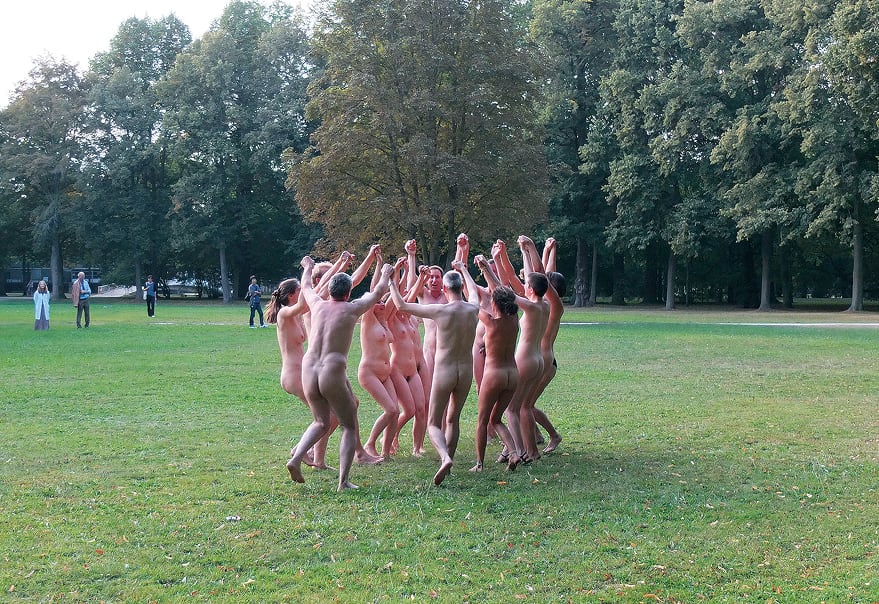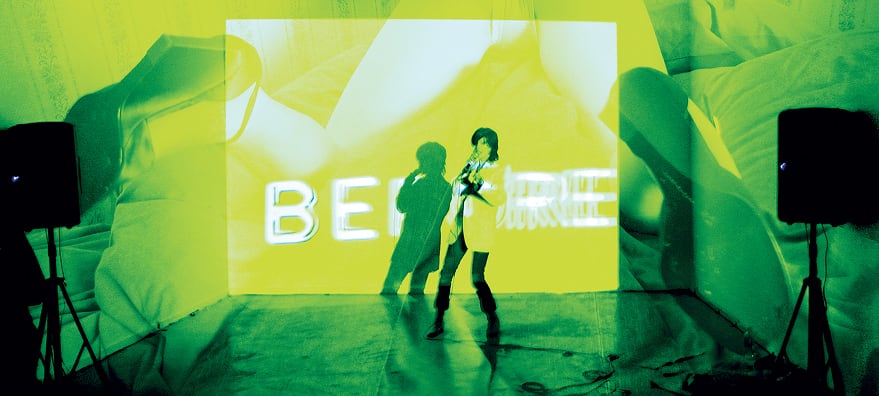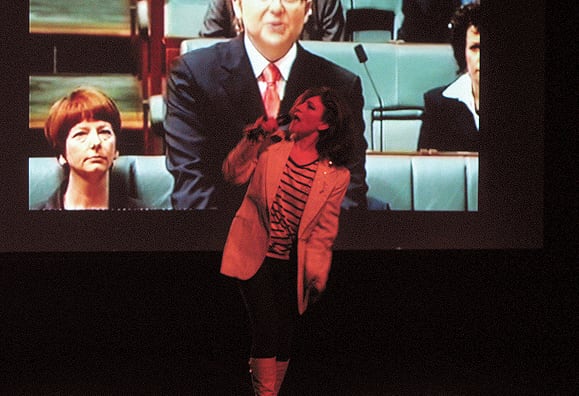
Meret Oppenheim made her furry-lined teacup on a whim. She made it quickly when she was young, then she spent a large part of the rest of her career trying to replicate its triumph. She was forever a slave to that early object’s success.
We saw David Byrne sing Burning Down the House some years back. He left it till the encore and the way he introduced it, we were left in no doubt that he was singing it for us, not himself. He, too, was a slave to his hit, but knew its importance to his audience. A song isn’t an object, it’s a thing. And this thing mattered to an awful lot of us. We wouldn’t have been happy if he hadn’t, and he knew it. He’s a pro and gave us what we wanted of him. The poor bastard. Fans make you pay.
Piero Manzoni filled tins with his own shit, then weighed up his turdies and charged collectors the equivalent cost in gold. It ended up being a complete steal for canny investors! I love this series of canned shit, because there’s a healthy disdain for the market built in to the work. The art market is so abstracted by shit, that it resists the normal logic of economics. Manzoni is saying: ‘my shits are worth gold, and you suckers, you’ll pay me in gold for them’. The art market mostly contains people from the elite, private school set. They love their pervy-poo jokes those boys. Stories like Manzoni’s cans of shit have your mums and dads scratching their heads about the state of art, and that’s a thing all artists should aim for when we can afford to head to the studio and try to make it. Art that is, not poo.

Making art objects is no problem. Finding a home for them to live, other than your own, that’s a problem. My house is a graveyard for art projects that couldn’t find a home to haunt other than my own. Even the laundry has paintings hanging on its walls. As I wash my family’s knickers, I gaze up at my art that hasn’t sold and wonder what I’ve done wrong. Every five years I need to freshen up my friendship pool, to have new folk to gift my art to. And let’s not think archive. An artist experiencing a career slump rapidly begins to look like one of those emotionally tortured creatures off an episode of Hoarders. A scatological, avant-garde intervention into my life, there’s art everywhere I look. But no career. Remnants in every drawer, I stumble into memory sticks full of promise. With nowhere to go.
I haven’t had a studio visit from a curator in four years. There’s so little curatorial interest in what I do I’ve taken up curating myself. It’s the only way I can get a gig. The art world is so complex it’s not even a conflict of interest to curate an art show and put yourself in it. Conflict of interest doesn’t even exist in the artworld. The more conflicted you are, the better you’ll do. As the artist/curator, you can give your art first dibs on position, and the cover of the catalogue. That you’ve written yourself. The art gig is so conflicted; I don’t trust that my curator self will be fully honest with my artist self if my work is looking crap. It’s hard talking to artists about their art when you want to show it.
Sustaining an art career past your youthful, optimistic, ‘buff you all’ phase is a problem. Even if you only churn out highly-prized fodder for a group of collectors your dealer put in a stranglehold some time back, it’s always a difficult gig to sustain. The ideas aren’t difficult, the money’s difficult.
I love art collectors. Art collectors have more belief in art than artists do. Very committed they are. I think it’s the money they’ve spent. Almost exclusively, collectors believe in the rarefied art object. The painting (I mean product, I mean object) should be just rare enough to still be identifiable by the wealthy collector’s wealthy and envious friends and family. Think a Howard Arkley large iconic canvas of the suburban Australian house. That’s a highly coveted trophy right there. Literally and metaphorically. For one of the great things about these works is that Howard plugged into our future and saw the great Aussie dream of home ownership slipping away, before it even did. That’s what he’s really painting: the mundane becoming the unreachable goal. The young being sold a lie and the men in the banks rubbing their greedy little hands together in glee at what we owe them for the rest of our lives.
One way to get ’round the I have no space left to make art, because collectors and curators are denying my clear and obvious genius, is to reject the commodity and perform. Materialism ain’t cool. I care what people think, not what they own. Great art challenges the way we think. The classic ‘a child could paint a Colin McCahon’ is a reaction (albeit a dumb one). To be a good art audience you’ve got to be on the look out for the stuff that can shift what you think, even fractionally. It’s big work and many, maybe even most people, don’t have the energy or the space left to do that. They’re too busy servicing a mortgage to live a conceptually rigorous life. Who’s got the time left for that crap? I would broaden my mind, but it’s cheaper to watch The Block and pick up tips on throw cushion design.
Performance as a site for discomfort is interesting. There’s a lot of theory surrounding the art of performance, but in a nutshell, performance gets people talking. An audience debriefing about what they’ve just seen together, that’s important work. If you share an experience with someone, that’s good for any relationship. Other art forms (like painting and cute little sculptures), especially the ones popular at Art Fairs, close conversations down with their passive aggressive manners. You don’t go to an Art Fair to talk, you go to shop. It’s a Direct Factory Outlet strip mall for art, rather than underwear and trainers.
Performance is always a favourite with we feminists, so that’s a plus too. Performances that people aren’t even sure are performances are a personal favourite. What’s Cool about Performance? The temporary is more easily mythologized than the permanent. Your audience is more naturally effusive about performance than any other art form. Use your audience. You can make up better stories to piss off your pals about how important what they missed was. The temporary is more easily forgotten too, and after some performances, that’s just as well.
Remember, anti-heroes age better than heroes.
There are performances being performed at every art opening you attend. Everybody is acting. The art audience stands round, passively, surveying the drama of the occasion. Who’s there, who’s wearing what, who’s chatting up who, who’s being introduced to who, by whom. It all means something. You can watch the sycophants bust out their best moves in their noble quest to prosper. It moves closer to the Hollywood-style casting couch every time you look. I love watching the big wigs arrive at an opening, quickly surveying the room with an exaggerated sweep of the head. Prioritizing down from most to least important guest. It’s a scale of who to talk to and when, and there’s a sense of urgency because no one is sure when anyone else might get it into their head to up and leave. The money people are approached first. Patrons, sponsors, collectors follow, then fellow arts bureaucrats. Artists are right down the ladder. Unless it’s their opening or they’ve done something notable in recent memory. Like winning a big prize or getting a major new public art commission. Public Art is the worst performing of all the art forms; I think it’s the safety issues that do it in.
Speaking of business, artists do the worst business deals of any group I’ve ever witnessed. Exposure is valuable to an artist, or so we’re always being told. A Fashion House that’s run out of fashionable new ideas, can do well for themselves by pilfering an artist’s visual language and calling it a collaboration. The fashionistas use the best images of the artist’s work on their t-shirts, their scarves, their rugs. The artist gets paid for their work with a couple of pairs of jeggings and a share on Facebook. The farce is marketed as an exciting cross-pollination of ideas and support for the arts. The ‘ripping the piss’ part repackaged as a prestigious opportunity for artists and they are falling for it. Artists signing away their best work to appear on a tea towel. That’s more bullshit right there. Merchandise is very seldom art. It is more likely over priced, twee, mildly amusing merchandise for people with more money than sense. Artists don’t need to be exploited, we’re so lacking in confidence, we’re happy someone/anyone is taking an interest in what we do. We sign on the dotted line to be exploited. I think that’s dangerous. Unfortunately, a lot of artists think it’s very exciting.
Art is as linked to fashion as everything else. Colours, forms, materials, ways of thinking. They’re in fashion, and then they go out of fashion. Then it’s all repeated. It’s very fashionable to be an artist now.
Art and design are related and easily confused. Design is so big in art now, especially amongst artists who aren’t that creative. What? Can’t you take a joke? It’s OK. I’m just being mischievous, trying to get a conversation started. Maybe even a debate! Maybe even a heated debate! Carpet and wallpaper are so big in art right now you’d think they were art! Even bathroom tiles can seem like art. If you know the right tiler. Indoor plants exhibited in art galleries doesn’t make them art, even if they’re presented in macramé hanging baskets. That’s retro-design. The 70s are very big (beards, folk music, cults). If you were paranoid, you could think that design being substituted for art is a diversionary tactic for institutions seeking to deny reality. Reality being, that planet earth is presently in a frightful mess and that a number of key indicators point to the high probability that we may well be doomed. Interior decor perversely fetishized at a time when increasing numbers of people have nowhere to live. The petite bourgeoisie prioritizing taste over substance. Who cares if a rug is crap? Nobody. You can save yourself a whole lot of heartache by filling art galleries with design and calling it art.
Writing is art as surely as a painting is art. Well-crafted words can squirrel and fester in the brain of the viewer just as surely as paint applied to canvas can. The carbon footprint of words is less. With words, you take down a quick sketch, catching thoughts out of the air. Sometimes you can get them down just right. Other times you need to edit the shit out of them. The process is just like art. It’s at the unfinished phase that an artist is most vulnerable to outside influences, so be careful who you show your shit to before you’ve decided to abandon it as finished. The eyes and ears of children and smart people untrained in the arts are your best chances of insight.
The main thing for any artist is that you’ve got something to say and have developed a style of your own with which to say it. You study the style of others, and steal the good bits from your heroes. Anton Chekov’s short stories are classics and it cracks me up that he always wanted to write a novel, but couldn’t. We always yearn to do what we can’t do, rather than enjoy what we can.
If you must read a complex and bloated artist’s statement to decipher what an artwork means, then is the meaning of the work still there, if you choose not to read the accompanying text? Or is the meaning more in the artist’s head than in their art?
Art is worth what someone is willing to pay for it. I’m not a fan of objects that are a slave to materials. I don’t care what a work is made from. I care about what it means. What it’s made me think about. That’s what good art does, and it does it more effectively than fashion, than design, than architecture.
If artists want to be honest about the beast we are in bed with, they should attend an art auction and see it for themselves. At one of the many auction houses who sell-out artists and art annually. Do an art swap with another artist today. Not tomorrow. An artist must develop and maintain a positive relationship to their art.
As for me, I’m bored with saying stuff; it’s too much like hard work. I’m going to have a holiday now, and hide behind abstraction. Get absorbed in colour and line and form. What a doddle. Success for an artist might not be acclaim. Continuing to practice making art is the success in itself, isn’t it?
Natalie Thomas is a Melbourne-based artist and writer, and publishes the arts opinion blog nattysolo.com

